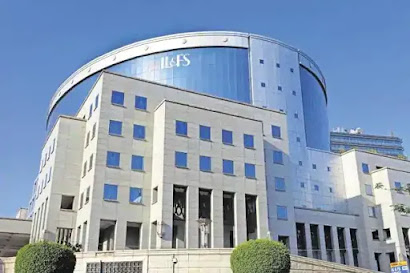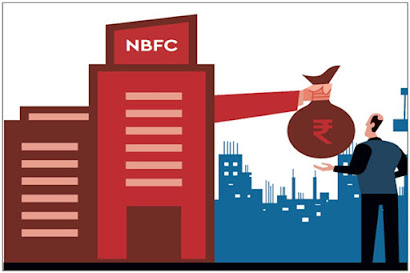Almost everyone of us has heard about the NBFC (Non-Banking
Financial Company) crisis beginning in mid of 2018 through end of 2019 that
shook the liquidity conditions and Indian economy. There was a company that was
in the helm of this crisis.
Infrastructure Leasing & Financial Services (IL&FS)
is a Non-Banking Financial Company or a Shadow Bank. Founded over 30 years ago
the conglomerate having 160+ subsidiaries have been a player in many
infrastructure developments projects in India some of which include 9-KM long
Chenani-Nashri tunnel, Delhi-Noida toll bridge, Tripura Power Project and many
more.
 |
| IL&FS Headquarter, Mumbai |
IL&FS has some major institutional shareholders such as Life Corporation of India (LIC), State Bank of India (SBI), Japan’s Orix Corporation and many other major banks including HDFC.
The Business
Model
 |
| NBFC |
To understand the DHFL crisis we have to understand the
business model of such shadow banks or commonly known as Non-Banking Financial
Company or NBFC. NBFC or shadow banks are basically banking companies without public
banking licence from the Reserve Bank of India. NBFC’s like IL&FS are in
business to lend out loans for housing development and secure project
development right. These NBFC’s do not use their own money to lend out to its
customers, rather it raises money from mutual funds and issues its debt
instruments or debt paper. They earn money using spread technique, the
difference between interest earned from its customers and interest paid to its
creditors is their earning since they raise money at a low interest rate from
market and lend it at higher rates to retail customers.
The
Problems
The problems arise because of Asset-Liability Mismatch. Due
to cost over-runs and delays in land acquisition grouped with slowdown in
housing sector IL&FS faced major cash flow problems. This led to IL&FS
defaulting in many major obligations including 450 Crore INR to SIDBI. Due to
many major financial defaults credit rating agencies ICRA and CARE downgraded
its credit rating. Total debt on IL&FS stood at approximately 94,000 Crore
INR.
Serious Fraud Investigation Office (SFIO) initiated a fraud
investigation in the matter. In April 2019 former VC of IL&FS Hari Sankaran
was arrested for granting loans to companies not deemed creditworthy which
resulted in loss to company and its stakeholders. Investigation also revealed
that there were problems in Deloitte’s audit of IL&FS. Deloitte’s report
was found to be showing a better picture of the company than it actually had,
which even led MCA to seek a ban on the auditors. In August 2019 ED filed its
charge-sheet in the matter.
 |
| Hari Sankaran ,Former VC Of IL&FS |
MNS chief Raj Thackeray was also questioned in IL&FS case. Kohinoor CTNL was probed because it received loan and equity investments up to 800 Crore INR from IL&FS. It was set up by Unmesh Joshi, son of former Maharashtra chief minister Manohar Joshi, Thackeray and builder Ranjan Shirodkar. They allegedly acquired loan without adequate security and then defaulted in repayments.
The Result and Plan Ahead.
When such a conglomerate default in payments it is not taken
lightly by investors market. As a result, it created a havoc and panic in stock
market alongside credit market. The IL&FS crisis started a liquidity crunch
spiral in Indian economy. As mutual funds and lender banks became risk averse,
they stopped lending to all of the NBFC’s sector which increased the cost of
borrowings. Since NBFC’s were out of money they couldn’t fulfil their
obligations and could not lend further to retail customers. This created a
panic in credit market. This crisis was so big that it led to the crisis of
Punjab and Maharashtra Co-operative Bank, Dewan Housing Finance Corporation Ltd
(DHFL), Housing Development and Infrastructure Ltd. (HDIL) and Yes Bank.
In October 2018, seeing the impact that the failure of
IL&FS would have on Indian economy, Government took timely steps and
constituted a new Board for IL&FS involving Uday Kotak as MD, Vineet
Nayyar, GN Bajpai, GC Chaturvedi, Nand Kishore and Malini Shankar. After the
consolidation of new BOD, a full audit of standalone and subsidiary companies
was initiated and formed a core operating committee under Nayyar working on
resolution plan.
Follow On Instagram: @kbitblogs - Click Here
Comments
Post a Comment